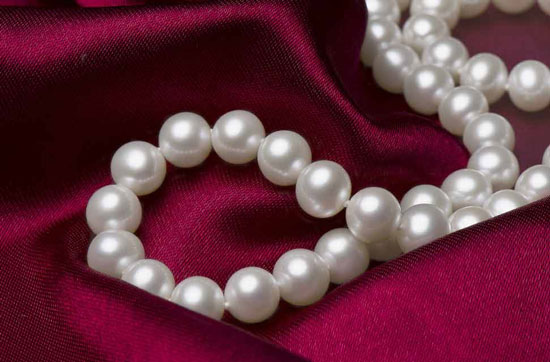The water conditions of cultured pearls are summarized as water depth, water flow, water pH, inorganic salts and bait organisms.

1, water depth
The waters of cultured pearls are preferably 1.5 to 3 meters deep.
2, water flow
The flow of water at a certain speed is of great significance to the growth of pearls and the cultivation of pearls. Practice has proved that the pearl luster bred in flowing water is better than the pearl bred in still water, and the yield is also high.
3. pH of water (pH)
Neutral waters (pH 7~7.5) are suitable for the growth of pearls and the secretion of pearls. Most freshwater waters have a pH of 6.5 to 8.5; hard waters are alkaline. If the pH exceeds a certain limit, it will affect the growth and survival of the pearl.
4, inorganic salts
Inorganic salts have direct and indirect effects on the growth of pearls and the formation of pearls. Calcium is the main component of the pearls and pearls (in the form of calcium carbonate). The breeding ground of the pearls is generally required to contain more than 10 mg of calcium per liter of water. In addition, magnesium, silicon, manganese, iron, etc., are required to have a certain content.
5, bait organisms
The bait in the water is abundant, and the nutrients of the pearl are rich, so that the pearl grows fast and the quality is high. The main bait organisms are phytoplankton and zooplankton.
6, lighting and ventilation
Light directly produces a thermal effect, which provides an energy source for the survival of the beaded carp and the bait organism; light affects the physical and chemical properties of the water environment; light has an important significance for the color, reproduction and behavior of the nucleus, and is rich in the luster of the pearl. Also beneficial. The ventilated environment ripples and increases the dissolved oxygen in the water, which also promotes the movement of the upper and lower water masses and the transfer of heat.

7, water temperature
The growth, development, reproduction and distribution of the pedigree are directly affected and controlled by the water temperature. The formation and growth of the pearl are also restricted by the water temperature. The tolerance of the nucleus to the temperature change range is three. And has important ecological significance.
(1) Suitable temperature range: 15~30 °C. In this water temperature range, the growth and development of the pearls are normal, the secretion of pearls is strong, and the pearls grow fast.
(2) Lower temperature: 10 °C. Below this temperature, the metabolism of the nucleus is in a stagnant state, the activity is weak, and the secretion of the pearl is basically stopped.
(3) Higher temperature: 35 °C. When the temperature exceeds 35 °C, the growth of the nucleus is hindered, and the metabolism in the metabolism is greater than the assimilation, resulting in the weakening or death of the nucleus. At the same time, the high temperature causes the nucleus to suffocate.
8. Water chemical indicators
Medium hard water (total hardness 10~15) is better, requiring 0.4~2.0 mg of ammonia nitrogen per liter of water to facilitate the rapid growth of phytoplankton. Phosphate 0.4~1.6 mg, sulfate 40~180 mg, silicate 10~14 mg, magnesium 18~55 mg, calcium 10 mg or more.
At the bottom of the aquaculture waters, there should be no vascular plants and moss, because aquatic plants compete with the bait organisms for inorganic salts. Plants and moss will decay and produce toxic substances, which will affect the growth of the nucleus. The vascular plants and moss should be removed before stocking the pearls.
Children'S Legging,Newborn Leggings,Childrens Black Leggings,Childrens Purple Leggings
NINGBO DHK IMPORT & EXPORT CO., LTD , https://www.deheke.com